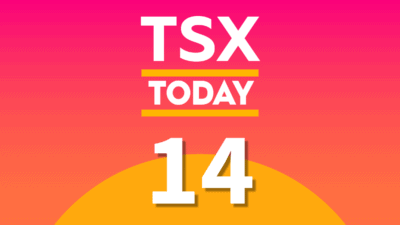The Tax-Free Savings Account (TFSA) gives Canadian investors a way to protect their profits from taxes. This is because both capital gains made and dividends received (except from foreign holdings) in a TFSA are tax free.
However, there are rules to abide by when using a TFSA, and breaking them can be costly. Today, we’ll take a look at two common TFSA mistakes, their consequences, and how you can avoid them.
Over-contributing to a TFSA
Adding too much money to a TFSA is one of the mistakes made by Canadians. Each year, Canadians get additional contribution room in the TFSA. The CRA has outlined the maximum contribution room per year since 2009. Assuming you were 18 years of age at some point in 2009, your maximum contribution room is now $69,500.
If you were to contribute more than the maximum amount, you must pay a monthly tax of 1% on the excess amount each month you are in excess. There’s no reason to simply give away 1% of your savings monthly, so it’s best to stay within the limit.
It’s important to remember that contribution room is shared across all TFSAs in your name. So, if you were to contribute $1,000 to a TFSA at one bank and $1,000 to a TFSA at another bank, you’ve now used $2,000 of contribution room.
To avoid paying the 1% tax on excess contributions, it’s vital to keep good records of your contributions across all TFSAs.
Frequent trading in a TFSA
The TFSA was designed to be a tax-advantaged medium- or long-term savings account. The CRA doesn’t allow extremely frequent trading in a TFSA. If you are caught performing many short-term trades that constitute a business, you will be subject to income tax on the earnings.
There are even more reasons to avoid highly frequent trading, even if it doesn’t constitute a business in the CRA’s eyes. For one, more trades means more commission, and you don’t get contribution room back for paying commissions in a TFSA.
As well, short-term trading can often result in large realized losses. Much like trading a stock for a gain is tax free, trading a stock for a loss doesn’t give you back the contribution room. As such, if you were to lose money on a trade, that contribution room is gone forever.
Invest for the long term instead
Trying to play the swings of the market in the short term is usually an ill-advised trading strategy. Throw in the fact there are added downsides in doing so in a TFSA, and it’s even worse. Instead, use your TFSA to invest in dividend stocks like Fortis (TSX:FTS)(NYSE:FTS).
Fortis is the sort of boring but stable business that can help investors grow their TFSA. It’s a large gas and electric utility company that serves customers in both the U.S. and Canada as well as some Caribbean countries. It has a very reliable if non-exciting stream of earnings, as a large portion of its business comes from regulated operations.
The company has increased its dividend consistently for an astounding 47 years. As of writing, the stock trades for $54.52 and is yielding about 3.5%. The company also plans to increase its dividend by about 6% per year for the next five years or so.
In its Q4 2019 earnings report, Fortis beat earnings estimates by 3.3%. The company is projected to grow at nearly 5% per year for the next five years as well.
As a utility company, Fortis is highly resilient against market crashes or recessions. This is reflected in its microscopic five-year monthly beta of 0.22. Although long-term investors shouldn’t be too worried about short-term market behaviour, Fortis still offers great peace of mind and wealth preservation during tough times.
The bottom line
Avoiding common TFSA mistakes is vital in one’s quest to build wealth. Always keep track of your contributions, and instead of trying to make a quick buck, use the TFSA for dependable long-term growth. To achieve this, consider investing in dividend all-stars, like Fortis, and watch your money accumulate over time.








